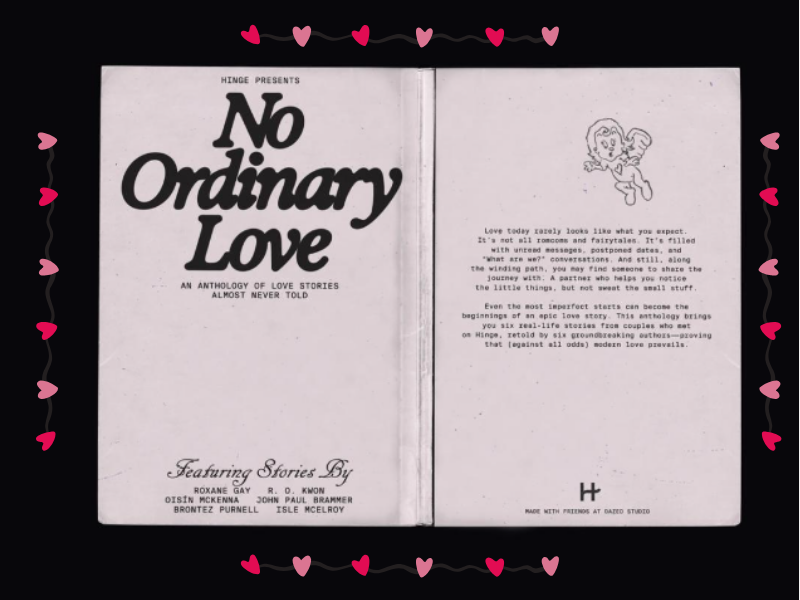
Well, there it went.
Before we even realized summer began…it ended. Kids are back from camp and have largely started school. Parents are full of post-summer blues, school jitters, and the realities of getting back into the swing of things. The struggle is certainly real. With all this comes the excitement of the sprint to the end of the year. Q3 & Q4 campaigns are kicking off, and we’re all in the thick of a ton of new business activity. I guess you’ve gotta take the good with the bad!
Shameless Plug: September 6th is SourceCode’s 7th birthday! Do you have a favorite SourceCode story? Share it with us, we’d love to hear! We’re celebrating with some delicious treats and singing our hearts out at the best karaoke bar in Koreatown in NYC. If you’re around, let us know! We’d love to hear what you’ve got (have no fear…the bar is low 😁)
And not to brag (ok, maybe a little), but US Managing Director Kristen Stippich and I have been named by PRNews as two of their People of the Year. If you see the POTY acronym after Kristen’s name, now you know why. 😉
Moving on…some good stuff this week. An interesting study between the CMO Council and KPMG about the importance of internal comms, highlights from the Sbux botched CEO announcement, and Hinge’s new offline campaign.
Enjoy!
Greg
Reassure stakeholders: New report shows how collaboration between marketing and tech teams can alleviate CMO anxiety
TL;DR: A new report from the CMO Council and KPMG shows that 84% of surveyed marketing chiefs believe artificial intelligence (AI) and machine learning could impact data security. The relationship between marketing leads and security teams is vitally important to easing these concerns, but nearly one-third of these teams only communicate during times of crisis.
Takeaway: As AI and other emerging technologies start to become more common in software solutions, data security and transparent communication will be increasingly important. Many CMOs have concerns over how sensitive customer data is used, in large part due to the damning repercussions if that data is mismanaged. It’s kind of hilarious then that collaboration between most marketing and data security teams happens only when there’s a fire to put out. Getting ahead of these concerns by managing internal communications and setting the standard for transparency may help alleviate anxiety. Marketing teams should regularly interact with security teams before there’s an emergency, which may, in turn, result in better collaboration if tragedy strikes.
Consider:
- Anxiety from the C-Suite in regards to emerging tech often results from fear of the unknown. How can you dispel those fears? Show your leaders that you’ve considered and educated yourself on every step before embracing a new solution.
- So often, we forget about internal communications as part of our role as marketers. But making sure all of your internal stakeholders are aligned is every bit as important as outbound marketing. How can you foster more collaboration and transparency between your marketing team and other teams?
Control the narrative: What we can learn from Starbucks’ rollout of its new CEO
TL;DR: On August 13, Starbucks announced it was replacing CEO Laxman Narasimhan with Brian Niccol, former CEO of Chipotle. The leadership change, which already led to a stock boost for Starbucks, came with hopes of Niccol bringing renewed success to the struggling coffee chain. The narrative was set up well until people found out that Niccol would be commuting regularly via private jet from his home in Newport Beach, CA, to the company’s Seattle HQ.
Takeaway: The most important thing in moments like these is to control the narrative, and Starbucks has seemingly lost control. In fact, a spokesperson for the company clarified that “its new chief will still be expected to work from Starbucks’ Seattle office at least three days a week.” Now, the team may have thought that would make Niccol seem more relatable, having to comply with the company’s hybrid work policies. But it did the exact opposite and ended up landing them a sarcastic headline in the New York Times. Instead of mindful listening and admitting to missteps, Starbucks seems to be taking the ‘let’s hope people forget’ approach. People probably will forget about how upset they are, and it’s hard to say if it’ll actually affect sales. But a bit more control of the narrative – perhaps through being transparent from the start about Niccol’s arrangement – could have made the situation a little bit better from the start.
Consider:
- Get a clear understanding of your priorities with your audience. Maybe your main motivator is sales. It’s true that we don’t know how Starbucks’ mismanagement will affect the bottom line, but it could have long-term repercussions. Messy narratives can damage your brand reputation and deter customers from wanting to return.
- When planning a big announcement (like a new CEO appointment), think through every possible scenario or storyline. While you may not be able to change the situation, you can be prepared for how to respond if things go south, and you can maintain control of the narrative before it gets out of hand.
Try out analog marketing: Hinge’s latest campaign is a physical zine written by literary stars

TL;DR: Dating app Hinge is getting physical… as in, physical marketing. The company just released an anthology of love stories called “No Ordinary Love” written by contemporary literary figures (see: Roxane Gay) inspired by six real-life couples who met on Hinge. The anthology has a dedicated website and will exist as an 80-page print zine available in New York and London starting September 9.
Takeaway: While a literary anthology may seem a bit odd for a dating app, Hinge actually hit an untapped market by leaning into the success of #BookTok and #Bookstagram as well as highlighting their mission as “the dating app designed to be deleted” to younger audiences. Gen Z is increasingly gravitating toward analog forms of media and entertainment, like physical books, flip phones, and iPods, due to their desire for authenticity. What says “authenticity” more than real-life love stories told through an analog delivery? The project turns Hinge’s customer testimonials into bingeable literature, leaning into the romanticized idea of what could happen through its services.
Consider:
- Gen Z and younger generations have a craving for authenticity and analog media. What would a more physical or less modern version of your product or services look like? Try a postcard campaign, mailing out physical eBooks, or simply making your brand less optimized and online.
- There’s a major influence in niche communities like #BookTok. Identify what niche interests align with your brand and analyze the content that’s resonating with audiences. While the audiences in those niche communities may be smaller in numbers, they are super committed to brands that resonate with them.
Like what you’re reading? To get our newsletter to your inbox sign up here!





